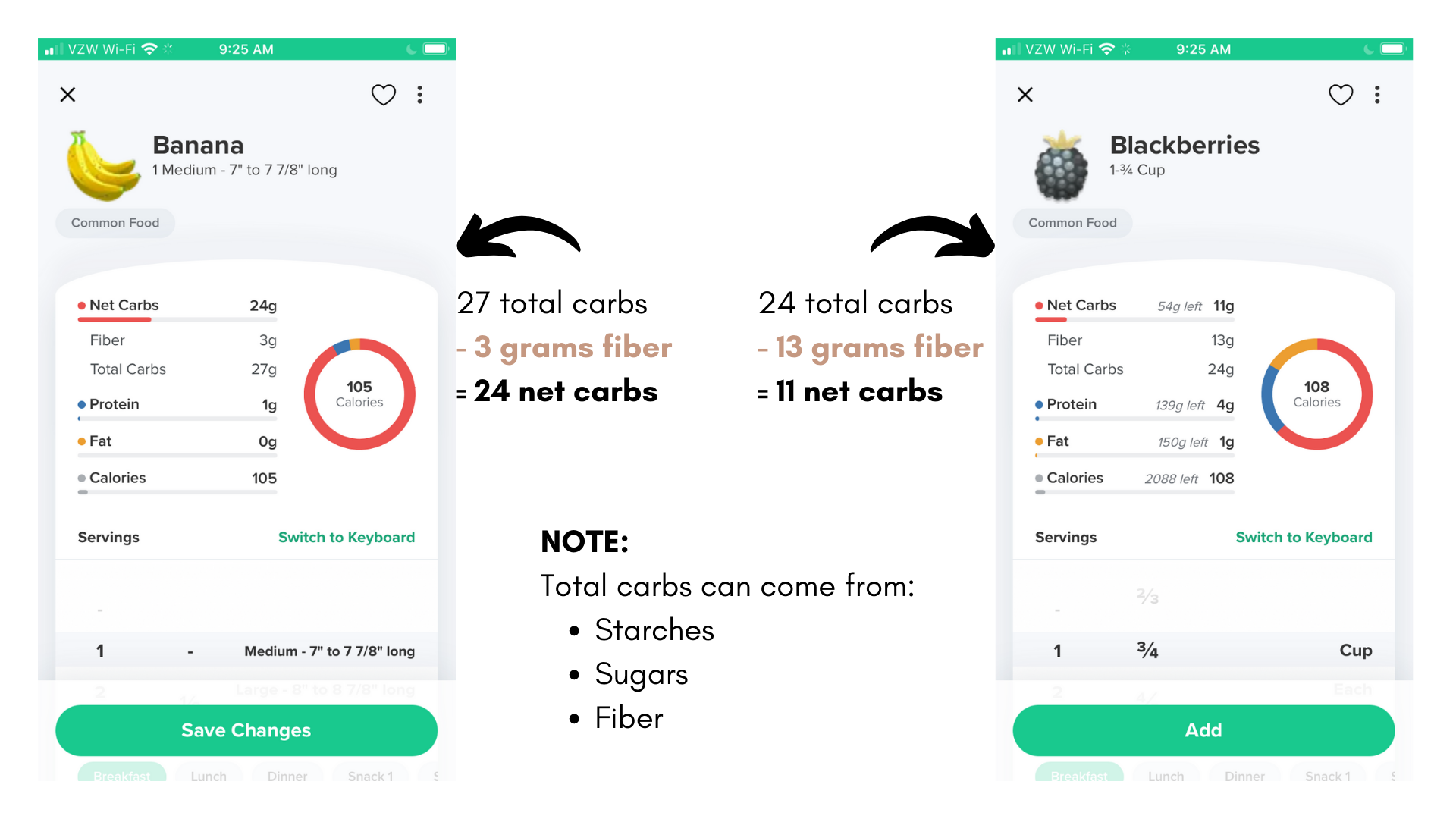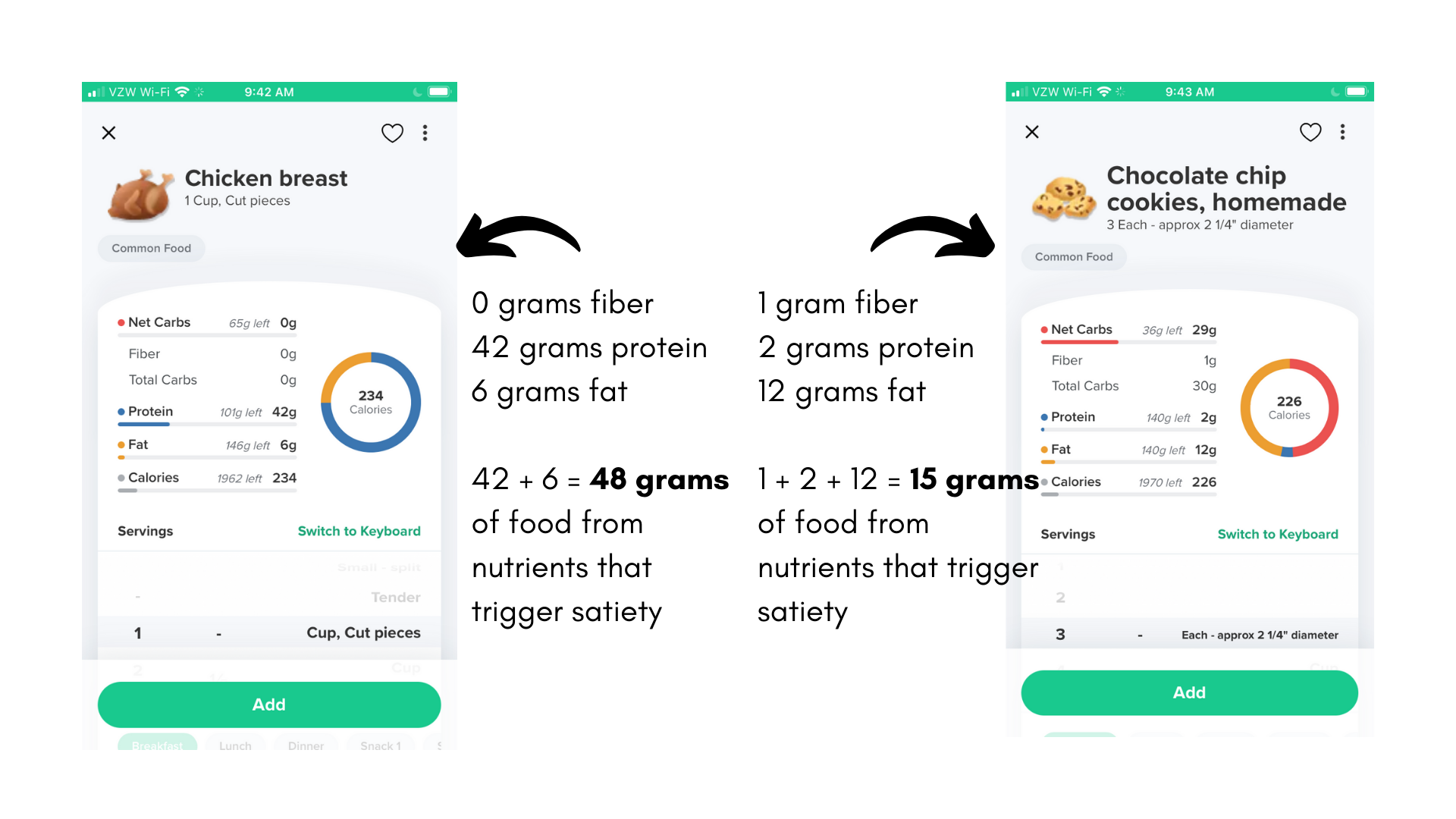Insulin Resistance Diet Tip for Women That Works
Jul 28, 2021Note: Reshape Physical Therapy and Wellness evolved into Weight Loss for Health, and finally Zivli. How to Lose Weight After 50 was our first course that eventually grew into Zivli. Some old blog posts or resources mentioned in this episode may have been removed.
This episode is going to share a powerful insulin resistance diet tip that actually works.
Have you ever tried to lose weight by counting points or calories? Did you ever think about the fact that your body doesn’t know what a point is? A calorie is just a unit of measurement. Specifically, a calorie is the amount of heat needed to raise the temperature of one gram of water by one degree celsius.
Your body also doesn't recognize the nutritional impact of foods that have a red, yellow, or green label. Your body is not a stoplight and you’re not trying to drive a car.
You’re trying to lose weight, keep it off, and get healthy. So to do that, you have to learn how to fuel your body in a way that keeps insulin low. The easiest way to understand what types of food, and quantities of food your body needs is by tracking macronutrients, not points or calories.
Listen to This Episode
The Simplest, Most Effective Way to Lose Weight & Keep it Off
If your weight loss program doesn’t match the underlying cause of weight gain, it’s not going to work long-term. Living a low insulin lifestyle is the simplest, most powerful way to lose weight and keep it off. It’s also going to help increase your energy, reduce food cravings, and improve your health.
When, “How will this affect my insulin?” instead of “How many points or calories does this have?” becomes your new litmus test for whether or not something will help you lose weight….weight loss becomes easier.
And calories or points mean nothing when it comes to insulin. But what your body does recognize is macronutrients. Insulin will respond differently based on the macronutrient composition of your food.
The ratios of macros can vary widely based on a person’s activity levels, age, lean muscle mass, medical conditions, and goals. But the point is to start understanding and tracking them on a regular basis - I like to say about 5 days a week.
If you’re thinking, “I’ve tried tracking my macros, calories, points, and food in general and I wasn’t consistent with it.” I have a ton of solutions for you inside my program to be more consistent. I teach you how to change your mindset and behavior so you can follow through on the actions you need to take to get healthy.
Because knowing what to do is not enough. You have to do it. But that’s beyond the scope of this video. If you struggle with consistency, that’s usually a mindset block and these are 100% normal and common. We all have mindset blocks we need to work through, myself included.
If you haven’t already, go listen to last week’s episode where I taught you how to do the CLEAR exercise, and use that exercise to reflect on why you struggle to be consistent with tracking your food.
Think about the moment in time where you said you were going to track your food and then didn’t. And be really specific as you go through that exercise. The devil’s in the details.
You might be in the camp that you truly don’t want to track your food. Maybe it’s just not something that’s healthy for you mentally, or you consider yourself too lazy to do it. Either way it’s still so important that you understand nutrition, and macronutrients so that you can make healthier food choices even if you choose not to track.
But for the record, research does show that tracking your food can take less than 15 minutes a day once you get the hang of it, and double or even triple your weight loss success. And that’s just tracking food. Your efforts will be even more effective if you track macronutrients because that’s the language your body speaks.
Just like any new habit, you’re going to want to give it time and practice. It’s going to feel like a pain at first but if you work to make it part of your lifestyle, and just something that you do, it’ll feel a lot more doable.
You know one of my favorite sayings is what got you here won’t get you there. As humans, we have to continually grow and change and evolve and as we know better, we can do better.
What Are Macronutrients?
So what do I mean when I say macronutrients? Macronutrients are nutrients we need in larger quantities. There are three main categories. Carbohydrates, protein, and fat.
Under each macronutrient umbrella there are different types. Not all carbs, proteins, or fats are created equally. For example, under the carb umbrella there are starches, sugars, and fiber.
Starches and sugars - especially when refined like added sugar or white flour, spike blood glucose. And insulin’s job is to move blood sugar from your bloodstream into your cells for storage. So a high blood sugar will lead to a high insulin.
I go into far more depth in my online weight loss program, but I wanted to give you an overview here. Starches and sugars will cause the greatest insulin response, whereas fiber slows digestion, so it has a negative response.

You 100% do not need to give up carbs to lose weight. I have so many carb hacks inside my program for how to reduce the glucose response of the carbs you eat. That way you don’t gain 2 pounds just for having some ice cream!
If macros are new to you, you may think that tracking them is going to be hard, but it’s not at all. Technology makes this very simple.
So many of my members have gone most of their adult life eating all the fruit they wanted because it was “free” but once they start using Carb Manager or another macros tracking app like MyFitnessPal, they realize that most fruit is just sugar, but there are some like berries that have a higher fiber ratio.
So they start to slowly change their diet to eat less of the high-sugar fruits like grapes, apples, and bananas, and more of the low-sugar fruits like berries.
Why Not All Fruit Is Equal
For example, if you have 100 calories of fruit, those 100 calories will affect your blood glucose differently depending on how much fiber is in the fruit.
I looked up 100 calories of banana and blackberries in the Carb Manager App and took a screenshot here. Both of them have similar total carbs, but if that’s all you're looking at, you’re not making the optimized decision.

You’ll want to look at the Net Carbs. Net Carbs are the total carbs minus the fiber, because remember fiber has a negative impact on blood glucose and insulin.
When we do that, we can see that one medium banana has 27 grams of total carbs, minus 3 grams of fiber, so 24 net carbs.
That means 24 carbs in the banana come from a starch or sugar.
Conversely, when we look at 1 ¾ cup of blackberries, they have 24 net carbs, but a whopping 13 grams of fiber.
For reference, women should aim for at least 25 grams of fiber a day.
24 minus 13 is only 11 net carbs. 11 grams are coming from starch or sugar.
Therefore, the blackberries will have a lower impact on blood glucose and insulin.
The 100 calories you eat of blackberries will help you lose weight MORE than the 100 calories from the banana because of how they impact insulin - your fat creation and storage hormone.
How Different Macronutrients Affect Your Satiety
Now, how food affects your insulin is important to learn because it indicates that you’re keeping blood sugar stable, you’re preventing spikes. Because when your blood sugar spikes from high sugar and starch foods, it falls again.
And that drop will lead to an energy crash and low blood sugar. This triggers you to want to eat more carbs and the cycle continues. So eating foods that keep blood glucose and insulin stable will help, but what also helps is to recognize that certain foods trigger your satiety hormones better than others.
Your satiety hormones are the ones that keep you full. And again, I cover this in depth in my program, but this chart is as simple as it gets.  Protein, fat, and fiber help trigger your satiety hormones. Starches and sugars do not. That’s why we always have room for dessert even after a big meal, because they really don’t make us much fuller than we already are.
Protein, fat, and fiber help trigger your satiety hormones. Starches and sugars do not. That’s why we always have room for dessert even after a big meal, because they really don’t make us much fuller than we already are.
Why “A Calorie Is a Calorie” Is False
We are really going to hammer home why a calorie is not a calorie when it comes to losing weight. Think about if you were hungry and you ate 1 medium chicken breast. Now imagine you’re hungry and have 3 small chocolate chip cookies. They are both about 230 calories, but which imagined situation made you feel more full?

Eating the chicken right!? I could eat 10 chocolate chip cookies and still not be full and here’s why. So here’s the macronutrient breakdown. 1 medium chicken breast has 0 grams of fiber, 42 grams of protein, and 6 grams of fat. When we add that up, 48 grams are coming from nutrients that trigger satiety - really all of the food.
That’s why it’s called nutrient-dense. Now let’s compare that to the chocolate chip cookies.
They have 1 gram of fiber, 2 grams of protein, and 12 grams of fat. That’s only 15 grams of nutrients that will trigger satiety.
The other 29 grams comes from the starch and sugar in the cookies and those will not trigger satiety. Further, they will spike blood glucose and insulin. That’s why cookies are not considered a nutrient-dense food.
When it comes to how to eat to lose weight, so many women have just counted calories or points because they didn’t know and understand a more effective alternative.
They’ve bought into one of the biggest weight loss myths, that a calorie is a calorie. And that’s false because as you’ve just seen, different types of macronutrients affect insulin and satiety hormones differently.
So when I’m coaching my members, I’m really focused on how they are fueling their bodies. Are they eating enough nutrients to stay full? Are they eating in a way that keeps insulin low?
And unfortunately, you just can’t rely on health food packaging to do this work for you. You have to know what’s in your food. So many health foods are loaded with added sugar and not helpful to lose weight.
I hope you found this quick explanation of macronutrients helpful for lowering your insulin resistance. It is one of the first steps we encourage Zivli members to take.
Subscribe & Review
Subscribing and leaving a rating and review are important factors in helping the Reshape Your Health Podcast and the YouTube Channel reach more people. If you haven't already subscribed, please do that today.
We would also be grateful if you left a rating and review, too. In your listening app, scroll to the “Ratings and Reviews” section, then click “Write a Review” and let us know what you enjoy about our show. We appreciate you taking the time to show your support. Thank you!
Resources From This Episode
>> Join Zivli
>> Freebie: Weight Loss Mindset Audio Training
>> Freebie: The Ultimate Food Guide
>> Track Your Macros Free Video Series

